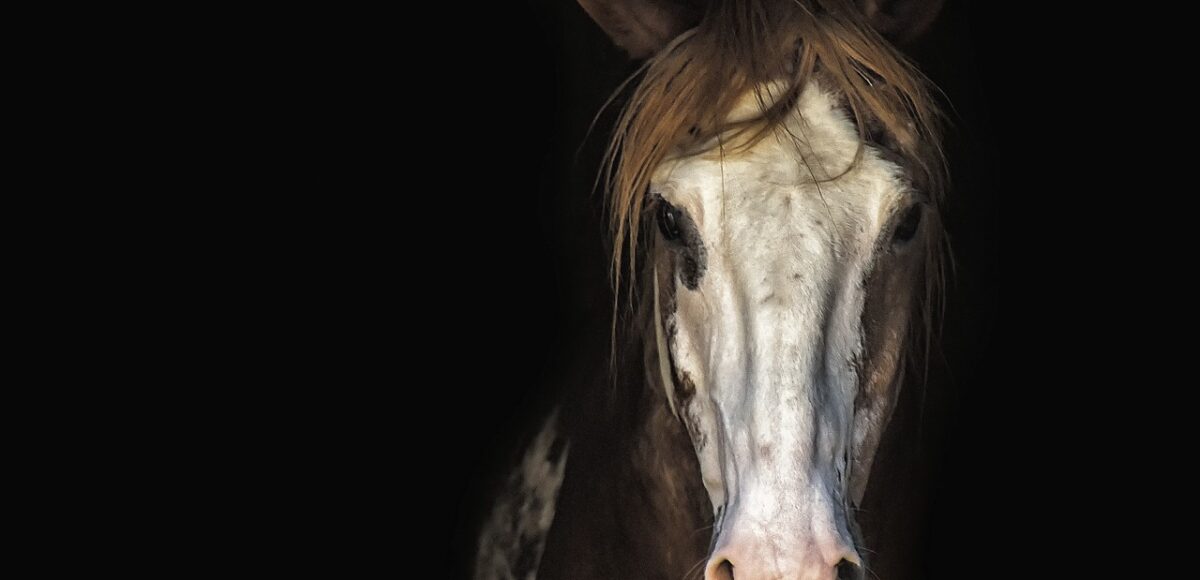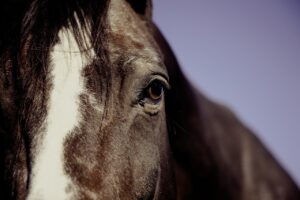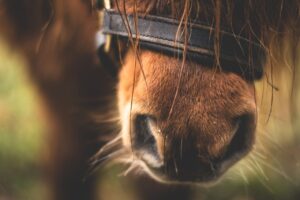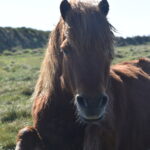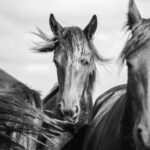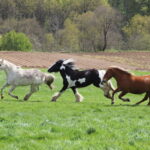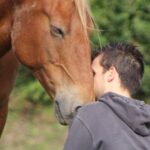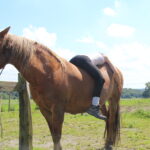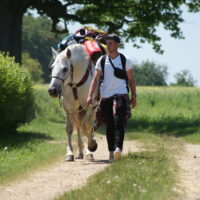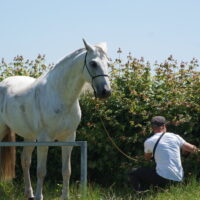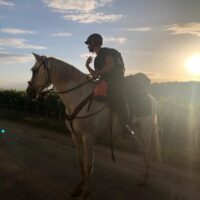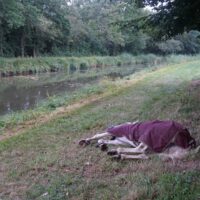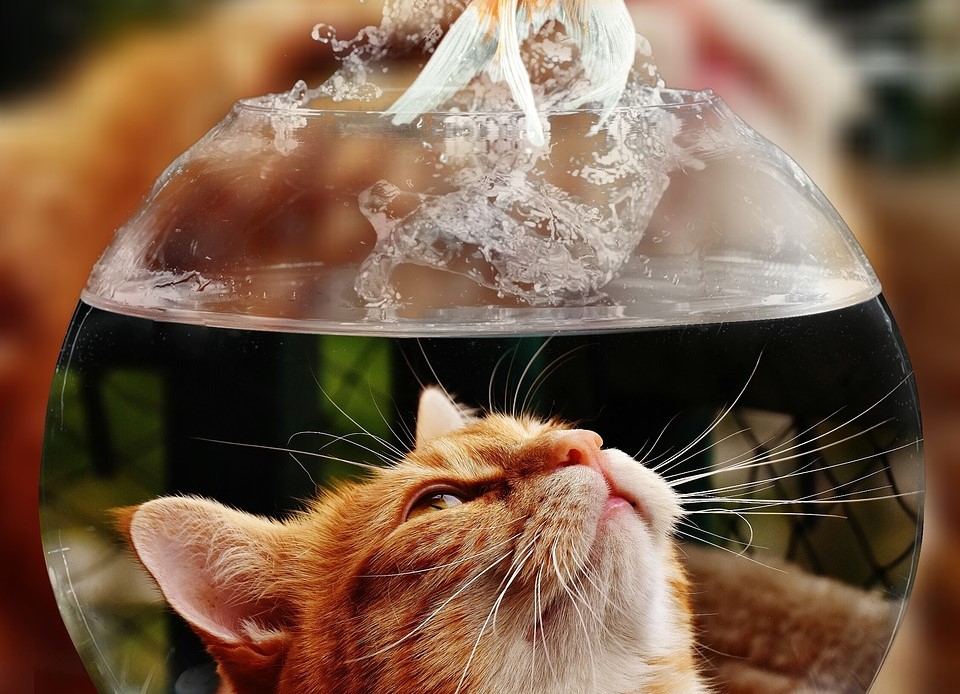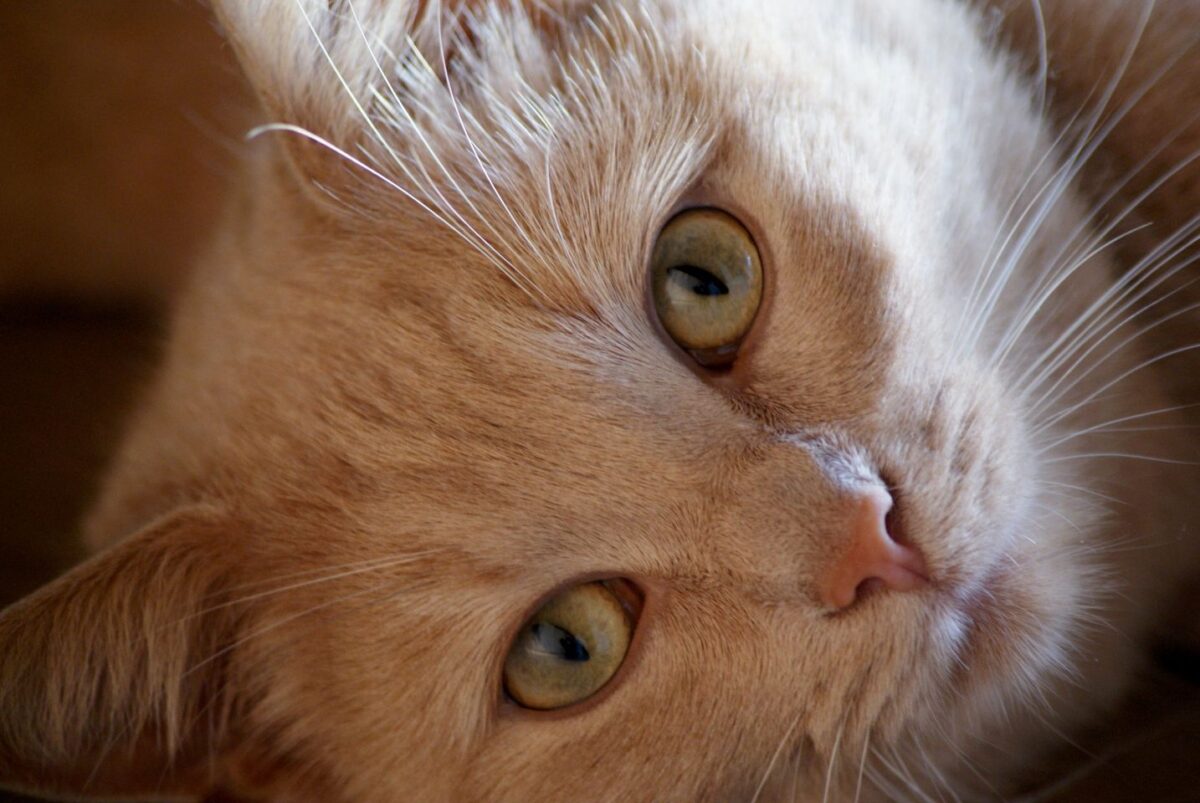Trapped inside while they are animals who thrive in plains and nomadism, desocialized, horses often suffer a lack of good care from humans. Far from plants of his natural surroundings and the ancient ways of gathering and drying hay in attics, they are often fed with industrial food and cereals. Who are those who strive to find their way back to the real physiological needs of horses, who freed their ironed feet and took them out of their first cages? I met different practicioners who are exploring the interactions between men and horses and the possibility of their therapeutic effects, both physically and mentally: balance, moving skills, coordination or body and emotional awareness.
Équité in Hoeilaart
Created in 2003, Equité is located near the Soignes forrest. Open to all, it is a 6 hectares space where one can come and meet horses and connect with nature. The two founders, Géraldine de Ribaucourt and Sophie Andersen, have done a great amount of work: “the horses have a lot of space and live outside, alongside other animals (ducks, chickens, dogs). We are giving them their food in the meadows. It is an antrophomorphic perspective to think that horses are cold outside during winter times. They manage very well as long as they have food and water in a safe place and they can evolve in herds.” In fact, it is clear that horses are rather embarrassed by flies in summer than by snow or rain as man would tend to think. If an animal is weakened or sick, they have the possibility to find refuge inside. There are 2 spaces where it’s possible to work individually or in small groups with horses, for example to improve psychomotricity, learn to take more responsibilities, work on the mobilization of the body or communication and emotion management.
Trained psychologists, the founders enriched their luggage by going back to training to master individual assisted psychotherapy with horses, personal group development and team building. They are finding themselves busy with a lot of cases with people suffering from burn-out and children with problems of self-confidence, attention disorders, hyperactivity or behavioral problems. They also work with institutions that look after children who have encountered problems with the law: “these are children who benefit enormously from working with horses, it is an important anchor in their week. It creates the movement of a maternal cradle that they have so very often not been able to experience.” The affect is generally more turned towards the horse than the therapist:” it is a relationship of a completely different order, one can’t take his therapist in his arms, one can not pet him.”
Horses are very sensitive beings; in nature, they are animals of prey: “to survive, horses are hypervigilant. Their senses are overdeveloped to be able to see any threat coming and to spot and read every signal in their environment. They can perceive the smallest change in us, the smallest stress, such as an increase in our heart rate or a slight change in the way we are breathing. The therapist is there as an observer, to translate what is happening and propose a way to explore what is being played. ” Encountering horses is an experience lived within the body: we move, we interact. Are we in pain somewhere? Is there any tension in one area of our body? How can the horse assist us in listening to the physiological signals of our body? What’s going on emotionally? Here are so many questions that can be explored. While in the context of everyday life, the first reflex is to disconnect from oneself when big emotions arrive, dissociating oneself from what one is experiencing in terms of emotions to be able to cope with adversity, working alongside with horses can help to welcome, accept, identify and understand the nature of emotions that arise. Moreover, these aspects are facilitated by the sensory approach of things with touch: “we forget the importance of touch as something comforting. It is a real support to be able to touch horses or be carried by them. This brings us back to a more emotional and less mental level, an invitation to a sensory encounter. “
Équité offers 2h30 workshops during spring and summer in small groups (react or act confidently, how to set limits, stress or body energy management).
The hippotherapy center in Louvain-la-Neuve
In addition to activities related to horses, a training in hippotherapy is held here in collaboration with the UCL faculty of psychology, the first university certificate and public recognition in this field in Belgium (where the profession of hippotherapist is not regulated by the law). The director of the center, Patrick Guilmot, organizes every summer a residential internship alongside his partner Gwénola Herbette, mindfulness reduction teacher. Going to the encounter of horses in a nature setting is a catalyst to dive deeper into the presence of the moment: “I was lucky enough to have access in my childhood during the holiday time to horses that were not there to be mounted. I tried different approaches, I spent time observing them. It is now that I realize that all the elements, from the experiential steps to the supervision by the adults who were watching over my experiments, were in germ for the way I conceive my work here at the center. I have always been looking for a two-way relationship, rather than a one-way, one-sided approach.” In the center, the space is arranged so that horses can live in herds within which each one has and knows their place. This hierarchy is clearly set and horses are constantly reminded each other: “it is very quickly defined, it is a matter of personality. It is played in an instant on a certain way of moving that is more tonic, more assertive. Horses are very fine to read the language of the body.” Children, adolescents and adults of all types of life situations come and meet horses here (life difficulties, physical or mental disabilities): “with people with severe disabilities, we often see clear improvements, such as a change in their posture. Horses are a great motivator for them.”
A trigger can make us adopt an automatism, based on a thought about ourselves or in response to our environment. It is a very fine mechanism to be able to observe and tune into that. What happens when I’m in the presence of a horse? How does he react when my thoughts are unclear? Who is this alive being in front of me? Horsetherapy can be playful and is based on an experiential approach: “basically, an encounter is a taming. How do we come into contact with a living being who has their own sensitivity, how are we going to negotiate with him without the use of words? Are we going to understand each other? How will we find an agreement?” Without prejudice, the horse does not take into account age, physical appearance or social status. He does not make any judgment, he naturally acts as he feels. He does not twist reality to please others, he does not have hidden agendas. Too often, horses are treated as objects. However, animals are not toys available for man to play: “some children who had behavioral problems wanted to choose THEIR horses, and brush them. The horse has no problem with that, he lets human beings express their needs. Once the session was over, the children were leaving their toys as they had found them. With the team, it left us with an uncomfortable feeling, so we decided to place more horses than children. Intrigued, the children started to wonder who was caring for the one horses that were not chosen to be brushed. This is a very human interpretation, a projection that sees the horse as abandoned while the horse is doing very well. Over time, the children realized that they could extend their relationships to others and take care of their horses without locking them in a cage. From object, the horse became more of a partner and alive interlocutor. Things were done with less greed and more consideration. We did not say anything, we put things in place so that the experience could take place.”
Les Champs d’Ailes in Nivelles
Delphine Schulte works in this space which is both airy and confidential and feels like a little out of time. As an invite to slowing down, the encounter with the horse, in this case Picasso, is based on sensoriality (to feel the animal, to touch, to be carried, to pay attention to how his ears move): observation, gradual way of encountering the animal while being on one’s knees below his nostrils; it is a mutual sensory encounter: “the horse is a barometer of our emotions. He is a real revealer of our hidden and incongruous sides. When I met Picasso, he wasn’t doing good: he was in Spain, had been beaten and caught the flu in the truck. He looked dull. It is a horse who loves to work to allow people to find their way back to confidence. Despite the fact that he likes to eat, when he is at work, he always resists the call to go and eat some grass nearby.” This is a sensory moment, intuitive and unconventional that relies on a relationship based on trust with the horse: “as soon as we see a discomfort emerging, the invitation is to retreat until the horse finds a comfort zone again in the presence of man. The horse then associates humans with peace of mind, in contrary to associating them with an anxiogenic element”.
Eden in Herentals
In 2021, I worked with Jason Wauters, the founder of EDEN in Herentals (Belgium). I did a quest of 11 lessons with Arion (we had been discussing about Aquila, Jason’s horse first) which was focused around body awareness, taking the space, leading the space and guarding the space. It ended with a dance with the horse with music. It helped me to become more aware about my weak and entry points and also my strenghts. There I met Le Petit Rouge, a spirited cat which I really was feeling drawn to. Some day I am open to welcome a horse in my life, he would have to be a spirited horse and I would first have to see deeper who he is under his horse suit.

